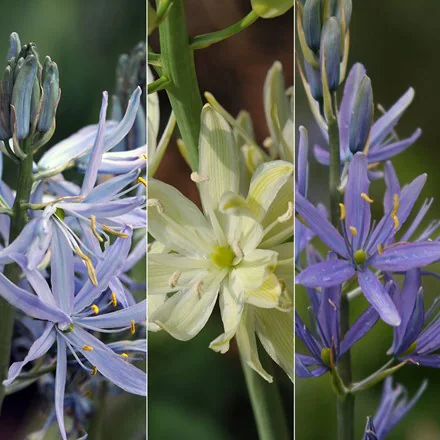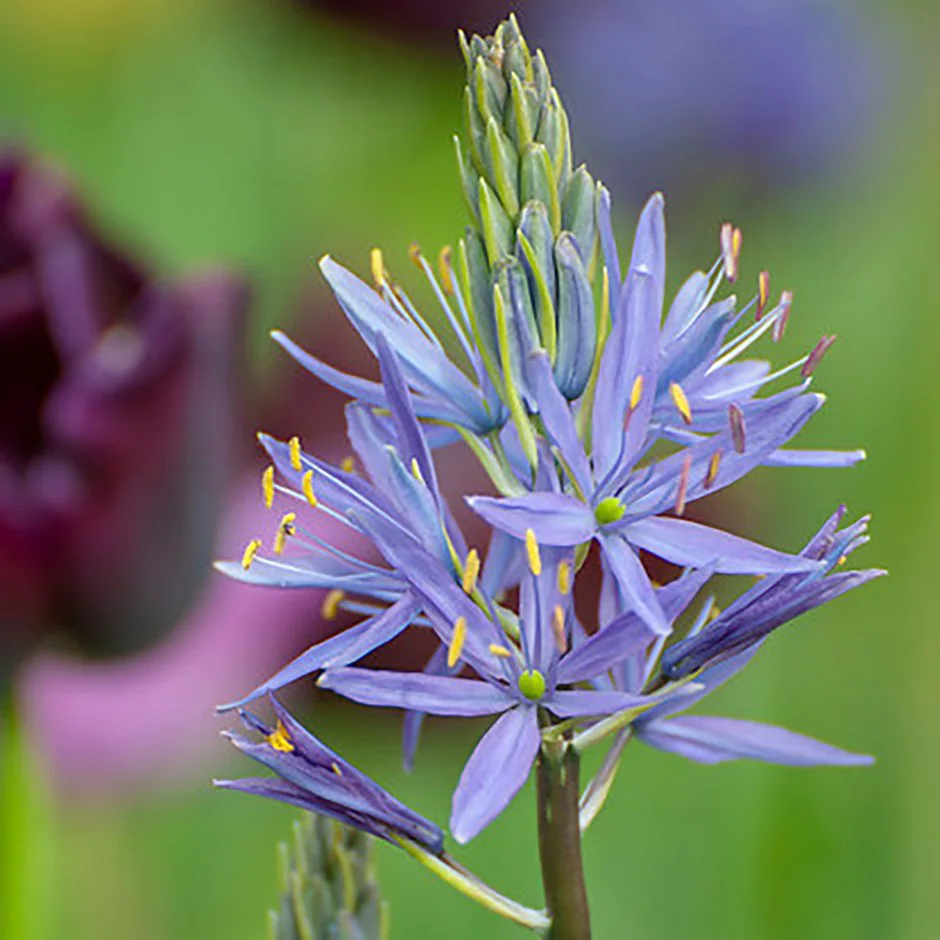Camassias originate from the woodland edges and damp meadows of the Pacific Northwest of America. They have many common names including camas, quamash, Indian hyacinth and wild hyacinth.
Camassias produce tall spires of star like flowers in blue, white and ocassionaly pink, at a time when the early spring bulbs, such as Crocus and Daffodils are at an end, and before the early perennials such as the Peonies have begun to bloom. This makes them a useful plant to fill that gap.
They are planted as bulbs in the autumn, ready to flower in late April, May and early June. They tolerate most soils. They are very hardy in the U.K. and perennial. Because of their origins they prefer a damp, humus rich site in sun or partial shade. Depending on the variety, they can reach a height of 90cm (3ft), but are sturdy enough to be self-supporting. They can be grown in meadows, borders and containers, woodland edge and also in the cutting garden. Other early perennials will help to hide the foliage which can become unsightly.
Plant the bulbs 8cm (3in) deep and 20cm (8in) apart in large groups in autumn. Clumps can be divided in summer, although this should be limited as they often resent disturbance.
To view a selection of these bulbs at Crocus click here
Mark Snelling
All images copyright Crocus
If you have enjoyed reading our blog post then why not fill in the form provided to allow us to send you our blog posts and newsletters by email. For all major gardening products, visit our shop from the menu above.


